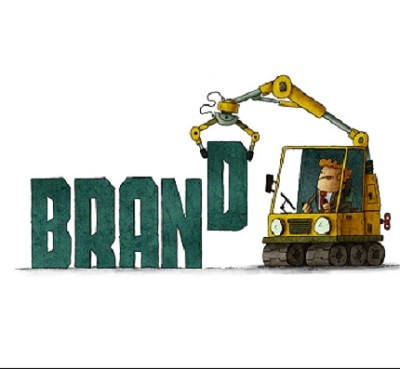Directive Blogs
How to Stack the Building Blocks of Your Brand
The marketing term “brand” has very literal roots, as it comes from the long-antiquated practice of branding livestock with a symbol that signified who owned that particular animal. Nowadays, however, “brand” implies much more than just a company’s ownership in its name or logo--it also suggests the personality and culture that a company exhibits and embraces. A brand, by design, is meant to shape how a company will be perceived by the public and is therefore a precious and fragile thing that requires careful maintenance. However, once started, developing a comprehensive brand identity and corresponding activity is fairly simple.
Identifying a Target to Market To
First of all, what variety of clientele do you want your brand to “speak” to? Determining who you want to talk to will give you a better understanding of how to talk to them. What are the demographics of the typical member of your ideal audience? Where do they lie on the socioeconomic spectrum? After all, a middle-aged board member of a Fortune 500 company is much different than a recently-graduated millennial trying to get their startup off the ground.
Different audiences will naturally have different focuses for their businesses as well. Priorities and concerns, while similar, will by no means be the same from company to company, and one target may feel a particular pain point more than another. These audiences will even speak in different terms than each other, some responding better to a clinical, no-nonsense approach while others will appreciate a measured bit of levity. You will need to identify which variables pertain to your target and reference them as you proceed.
Developing Your Brand Personality
Once you’ve established who you want to speak to and analyzed their brand personality, you will want to shape your marketing and brand development to best communicate with your target. By mirroring the tone of their materials (be they clinical and no-nonsense, open to some controlled nonsense, or otherwise) you can show appreciation for their pain points and explain how you can resolve them in a way they will understand.
This communication extends beyond your written materials as well. Try to find out if member organizations of your target frequent other events and become involved yourself. Depending on the brand you want to cultivate, your activities could range from appearing at Chamber of Commerce meetings as a valuable knowledge resource to sponsoring a local Little League team, speaking to your company’s family values and appearing as a family-friendly business.
Reaching Out and Sharing Your Brand
Now that you have definitively established your new brand’s personality, it’s time to show it off to the public. Offer to speak at public events--such as those Chamber of Commerce meetings mentioned earlier--and keep what you say (and how you say it) in line with the company brand. Any materials you produce for public distribution, or internal documents, should be written to reflect this brand as well. To assist in achieving this goal, it is advisable to produce an in-house guide for styling and composing written materials on behalf of the company. This style guide should then inform how any and all materials from that point on should represent the company.
Preparing Your Brand Identifiers
Don’t worry, we haven’t forgotten about these. Your brand will be given a name and a face by your company’s name and logo, so it is just as crucial to get them right as well. Is your name memorable and easy to pronounce? Is your logo simple and easily transferred from platform to platform, and between full color and black and white? Have you determined specific colors to use and incorporated them in your website, your deliverables, and any other company-branded materials? Are your materials all produced in the same font, whether it’s a webpage, a print ad, or a brochure?
If these considerations seem nit-picky, it’s because they are--and you’ll have to be just as meticulous and committed to whatever decisions you make concerning your brand. After all, nothing can kill a brand faster than inconsistency, and experimenting with different styles and ideas is a job best done before an initiative is released to the public.
Putting It All Together
So, once you’ve combined these ingredients together in your audience’s perception, you have created a recognizable brand they they will remember. This, of course, is the best-case scenario. Your branding initiative will rely on dozens of variables unique to your situation, so it may take some trial-and-error to land on a brand that is truly resonant with your desired audience, and could very well require revisions in the future.
If you would like some outside help assembling your brand to best fit your desired clientele, we can put our expertise to work for you. To recruit Directive to your latest marketing initiative, contact us today.


